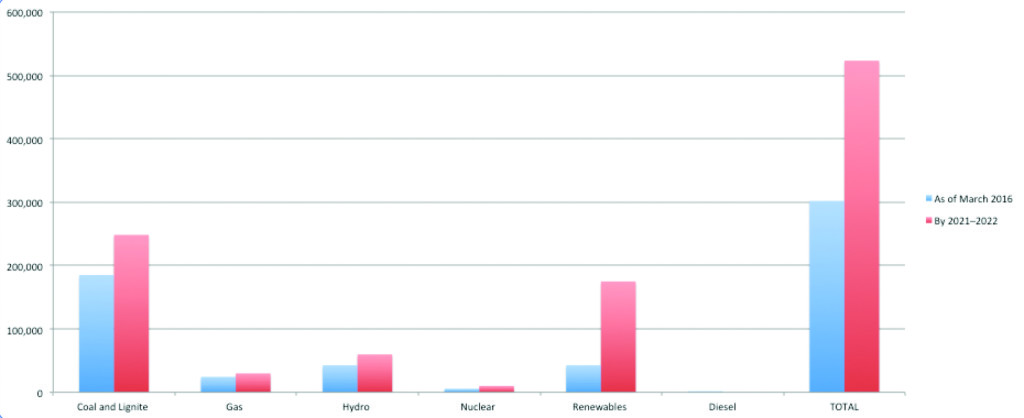India to Freeze Coal Construction, Focus on Expanding Renewables
A draft national electricity plan published in December by India’s Central Electricity Authority (CEA)—a statutory organization that is overseen by the Ministry of Power—looks to add 101,645 MW of new conventional capacity during the current 12th Five-Year Plan (2012–2017), nearly 85% of which will be coal-fired. But after that, through 2022, the country will refrain from building any new coal capacity, shifting its focus instead to install a total of 175 GW of renewable capacity by that year.
As of March 2016, about 61% of the country’s installed capacity was coal-fired, 14% came from hydropower, 14% came from other renewables (mostly wind, followed by small hydro and biomass), 8% from natural gas, 2% from nuclear, and 1% from diesel. Seeking to eliminate power shortages and make electricity accessible to all households over the next five years, the country has embarked on an ambitious infrastructure expansion that has seen its installed capacity swell from 1,713 MW in 1950 to 302,088 MW as of March 2016. Recent undertakings include the integration of regional grids into a single national grid. That has helped tamp down the country’s debilitating peak demand deficit, from 12,159 MW (9.0%) in 2013 to 4,903 MW (3.2%) in 2016, the draft national electricity plan says.

Conventional generation capacity additions during the 12th plan exceeded targets by 115%, the draft says. While coal makes up the bulk of new additions, the remainder will come from lignite (1,290 MW), natural gas (6,080 MW), hydro (5,525 MW), and nuclear (2,500 MW). However, future additions through 2022 (Figure 2) will take into account a “low carbon growth strategy,” the CEA said, which will mean no new coal capacity is required. It will instead entail ramping up generation from hydro (by 15,330 MW), nuclear (2,800 MW), wind (29,034 MW), and solar (81,237 MW). Still, the country will continue to depend on coal for reliability, at least 39% of it from supercritical plants, owing to an acute natural gas shortage, it said.
While gas power provides the “advantage of fast ramping capability” as more renewables are added, and about 4,340 MW of new gas-fired generation is ready for commissioning or under construction, the CEA noted the country’s gas supply hasn’t been keeping pace with growing demand, including from the power sector. “The gas supply for gas based power stations in the country is inadequate and the country is facing huge generation loss,” it said. “Presently, existing gas based power plants are operating at very low [plant load factor] of about 23% and [a] few gas based power plants are lying idle due to non-availability of natural gas.”
Coal supplies are expected to be adequate through 2027, even if the monsoons fail and the country sees a drastic reduction in hydropower, the CEA noted. The country will now have to grapple with an assortment of other issues. One is that main plant equipment suppliers are seeing a general lack of orders. Others involve carbon mitigation, workforce issues, and project financing.
—Sonal Patel, associate editor (@POWERmagazine, @sonalcpatel)